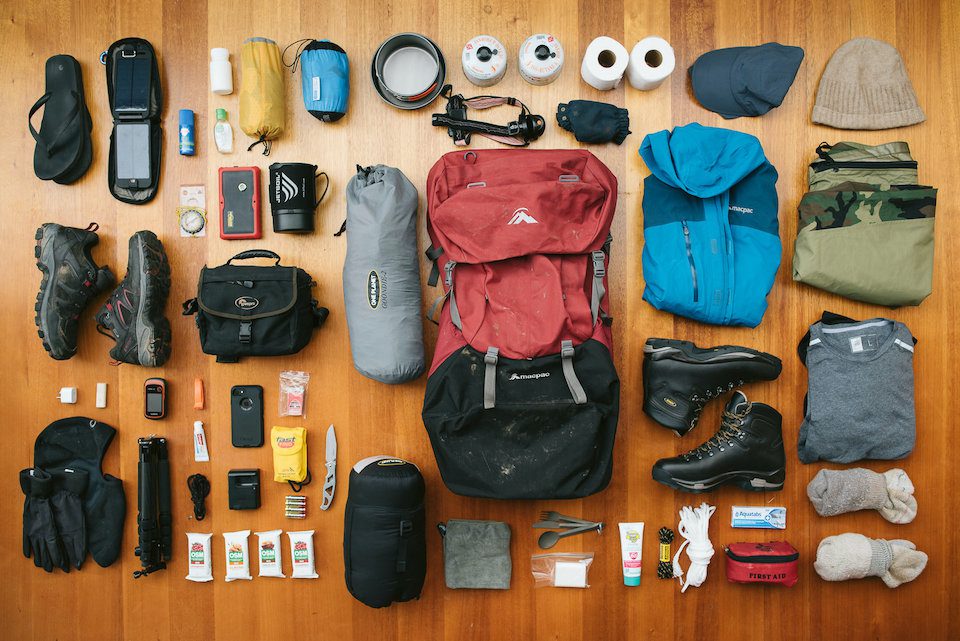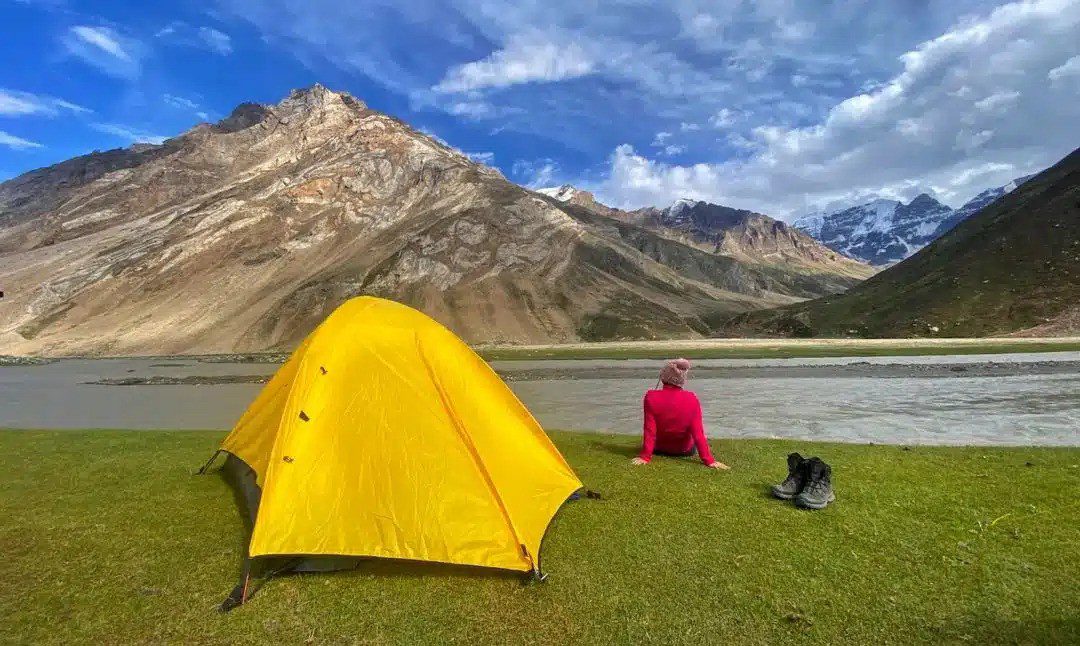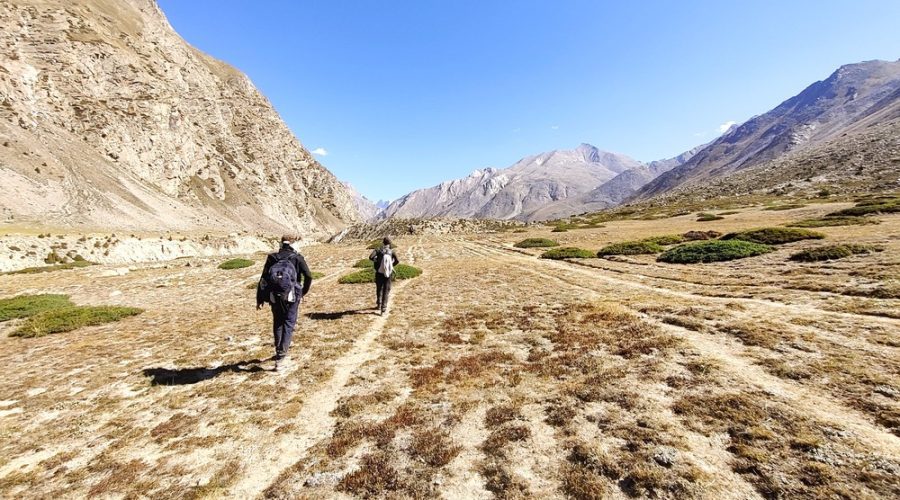Sustainable Trekking in Ladakh offers an incredible opportunity to explore Ladakh, a high-altitude desert nestled in the northern part of India, which is a dream destination for trekkers from all over the world. With its rugged mountains, pristine lakes, and rich cultural heritage, this remote region offers some of the most breathtaking trekking routes in the Himalayas. However, Ladakh’s fragile ecosystems are particularly vulnerable to human activities, making sustainable trekking essential for preserving this natural wonder for future generations.
In this blog post, we’ll explore how to practice sustainable trekking in Ladakh, highlighting ways to reduce your environmental impact, protect local biodiversity, and support the region’s communities. From eco-friendly trekking routes to essential “Leave No Trace” guidelines, we’ll show you how to tread lightly in Ladakh’s delicate environment.
Introduction to Sustainable Trekking in Ladakh
As one of the most beautiful yet fragile ecosystems in the world, Ladakh faces a growing challenge from tourism. More visitors mean more pressure on natural resources, leading to soil erosion, water pollution, and disturbance of wildlife habitats. Sustainable trekking in Ladakh is about minimizing these impacts by adopting responsible practices that conserve nature and respect local cultures.
According to
Maria Lopez, a trekker from Spain who visited Ladakh in 2022, “Ladakh’s beauty is incomparable, but it’s clear that the ecosystem is delicate. Practicing sustainable trekking is essential to protect this paradise.”
Why Sustainable Trekking is Crucial in Ladakh
Ladakh’s high-altitude landscapes, with their thin air and fragile vegetation, are highly sensitive to even the smallest human activities. The region’s cold desert ecosystem can take years to recover from damage. Therefore, trekking responsibly is not just a recommendation; it’s a necessity.
In addition, the region is home to endangered species such as the snow leopard, Himalayan ibex, and several rare bird species. Human encroachment and waste can disrupt their habitats, making conservation efforts more difficult. For trekkers, adopting sustainable practices helps protect these species and maintain the region’s biodiversity.

“During my trek, I realized how easily the environment can be damaged. It’s our duty to ensure we leave no trace behind.”
— David Miller, Environmental Scientist, USA
Understanding Ladakh’s Fragile Ecosystems
Ladakh is a land of contrasts. From arid mountains to lush river valleys, each of its ecosystems plays a crucial role in maintaining the region’s biodiversity. However, these ecosystems are incredibly vulnerable to the effects of over-tourism.
Flora and Fauna of Ladakh’s Fragile Zones
Ladakh’s harsh climate supports a range of unique flora and fauna adapted to survive in extreme conditions. Alpine plants, like dwarf shrubs and grasses, grow slowly and are easily disturbed by foot traffic. Wildlife such as the snow leopard, Tibetan antelope, and black-necked crane rely on these fragile habitats for survival.
Unfortunately, unregulated trekking and camping can lead to habitat destruction, soil compaction, and pollution, all of which threaten the delicate balance of these ecosystems. When trekking, it’s important to stay on designated trails and avoid trampling vegetation to protect these species.
“I saw a herd of ibex on my trek and knew that respecting their habitat was crucial. Trekking responsibly ensures these animals will thrive for years to come.”
— Sophie Patel, Wildlife Enthusiast, UK
Impact of Trekking on Ladakh’s Ecosystems
While trekking is a low-impact activity compared to other forms of tourism, it still leaves a mark. Popular trekking routes like the Markha Valley or Stok Kangri trek are becoming overcrowded, leading to trail erosion and litter. This not only affects the visual beauty of the landscape but also damages the delicate ecosystems that depend on undisturbed environments.
Adopting sustainable trekking practices helps mitigate these impacts. By sticking to marked trails, avoiding littering, and carrying reusable containers, trekkers can significantly reduce their footprint.
Best Eco-Friendly Trekking Routes in Ladakh
If you’re planning a trekking expedition in Ladakh, there are several eco-friendly routes that allow you to enjoy the region’s beauty while minimizing your impact on the environment. Here are some of the best sustainable trekking routes:
Top Sustainable Trekking Routes for Beginners
For beginners, Ladakh offers several short, less crowded treks that are ideal for eco-conscious travelers.
1. Sham Valley Trek: Known as the “Baby Trek,” this route is perfect for first-time trekkers and passes through small villages, allowing you to experience Ladakh’s culture while leaving a minimal footprint.
2. Lamayuru to Alchi Trek: This trek takes you through the ancient monasteries of Ladakh, with opportunities to stay in eco-friendly homestays, supporting local communities.
Challenging Trekking Routes with Minimal Impact
For seasoned trekkers looking for a more challenging route, consider these eco-friendly options:
1. Markha Valley Trek: One of Ladakh’s most famous treks, the Markha Valley offers stunning views while providing opportunities to engage with sustainable tourism initiatives such as eco-lodges.
2. Chadar Trek: Known for its frozen river, the Chadar Trek is a unique winter adventure. To keep this trek sustainable, it’s important to avoid camping in unauthorized areas and to carry out all waste.

“I loved the Sham Valley trek. The homestays were eco-friendly, and it felt good to know my stay was supporting the local economy.”
— Ana Rivera, Trekker, Mexico
Leave No Trace: Essential Guidelines for Responsible Trekking
The Leave No Trace principles provide a framework for minimizing your impact while trekking. By following these guidelines, you can help preserve Ladakh’s fragile ecosystems for future generations.
Principles of Leave No Trace in Ladakh
1. Plan Ahead and Prepare: Before you start trekking, research the environmental regulations for the area. Make sure you’re aware of the designated trails and camping zones to avoid damaging sensitive areas.
2. Travel and Camp on Durable Surfaces: Stick to established trails and campsites to prevent soil erosion and damage to vegetation. Avoid creating new paths.
3. Dispose of Waste Properly: Carry out all trash, including biodegradable waste. Never leave food or packaging behind, as it can harm wildlife.
4. Leave What You Find: Don’t disturb wildlife or remove plants, rocks, or cultural artifacts. Preserve Ladakh’s beauty for others.
5. Respect Wildlife: Observe animals from a distance and avoid feeding them. Human food can be harmful to wildlife.
How to Manage Waste and Reduce Pollution While Trekking
One of the most important aspects of sustainable trekking is waste management. Carry a reusable water bottle and purification system to avoid buying plastic bottles. For food, bring reusable containers and avoid packaged snacks that create excess waste. Always pack out what you pack in.
“The Leave No Trace principles made me rethink my trekking habits. I realized how much waste we generate even in remote places like Ladakh.”
— Carlos Ruiz, Adventure Guide, Argentina
Practical Tips for Sustainable Trekking in Ladakh
Sustainable trekking involves more than just following Leave No Trace principles. It also includes supporting local communities and choosing eco-friendly gear.

Packing Eco-Friendly Trekking Gear
When preparing for your trek, opt for gear made from sustainable materials. Look for clothing made from organic cotton, bamboo, or recycled materials. Use a solar charger instead of disposable batteries, and carry a reusable food kit to avoid single-use plastics.
Choosing Local and Organic Food Options
Food is a significant part of any trekking experience. By choosing locally sourced and organic food options, you can reduce the carbon footprint of your trek and support local farmers. Many eco-friendly homestays in Ladakh offer organic meals made from locally grown produce.
“The homestays along the Markha Valley trek served delicious, organic food. It felt great to support the local farmers while enjoying Ladakh’s culinary heritage.”
— Nina Johansson, Nutritionist, Sweden
Supporting Ladakh’s Local Communities
Responsible trekking also means supporting the communities that call Ladakh home. By engaging with local guides, staying in eco-friendly homestays, and purchasing locally made products, you contribute to the local economy and help preserve Ladakh’s cultural heritage.
Hiring Local Guides and Staying in Eco-Friendly Homestays
Hiring a local guide not only enhances your trekking experience but also ensures that tourism benefits the community directly. Look for eco-friendly homestays and lodges that follow sustainable practices, such as using solar energy, composting waste, and serving organic food.
Engaging in Cultural Preservation While Trekking
Respecting local customs and traditions is essential when trekking in Ladakh. Always ask for permission before taking photos of people or religious sites, and dress modestly, especially when visiting monasteries.
“Our local guide shared so many insights about Ladakh’s culture and environment. It was a deeply enriching experience.”
— Lena Fischer, Teacher, Germany
The Future of Sustainable Trekking in Ladakh
As tourism in Ladakh grows, so does the responsibility of trekkers to protect the region’s natural and cultural heritage. By adopting sustainable practices, you can help ensure that Ladakh remains a haven for trekkers and wildlife alike.

Conservation Efforts to Protect Ladakh’s Fragile Ecosystems
Several NGOs and local organizations are working to protect Ladakh’s ecosystems. By supporting these initiatives, trekkers can contribute to ongoing conservation efforts.
How Sustainable Trekking Can Combat Climate Change in Ladakh
Ladakh’s ecosystems are particularly vulnerable to the effects of climate change. By reducing your carbon footprint through eco-friendly trekking practices, you can help mitigate these impacts. Consider offsetting your trek’s carbon emissions by supporting reforestation projects or other environmental initiatives.
Conclusion: Treading Lightly on Ladakh’s Fragile Ecosystems
Sustainable trekking in Ladakh is not just about enjoying the stunning landscapes; it’s about protecting them for future generations. By following eco-friendly practices, respecting local cultures, and minimizing your impact, you can help preserve Ladakh’s beauty and biodiversity. Remember, every small step you take towards sustainability makes a big difference in safeguarding Ladakh’s fragile ecosystems.

Q&A: Frequently Asked Questions About Sustainable Trekking in Ladakh
Q: What is the best time of year for sustainable trekking in Ladakh?
A: The best time for trekking in Ladakh is from June to September, when the weather is milder, and most routes are accessible. For winter treks like the Chadar Trek, January to February is ideal. Always check the weather and environmental conditions beforehand to avoid damaging fragile areas.
Q: How can I reduce my carbon footprint while trekking in Ladakh?
A: You can reduce your carbon footprint by using public transportation or carpooling to your trekking start point, carrying reusable containers, and packing eco-friendly gear made from sustainable materials. Consider offsetting your emissions through a carbon offset program.
Q: Are there any eco-friendly accommodations in Ladakh?
A: Yes, many homestays and guesthouses in Ladakh practice sustainable tourism. Look for accommodations that use solar power, recycle waste, and serve organic, locally sourced food.
Q: What should I pack for a sustainable trek in Ladakh?
A: Pack reusable water bottles, eco-friendly toiletries, organic or recycled clothing, and a solar-powered charger for electronics. Avoid single-use plastics and packaged foods.
Q: How can I support local communities while trekking?
A: You can support local communities by hiring local guides, staying in eco-friendly homestays, and purchasing locally made products such as handicrafts. Always respect local customs and contribute to community-based tourism projects.
Q: Can I trek in Ladakh without a guide?
A: While it’s possible to trek some routes without a guide, hiring a local guide enhances your experience and ensures that tourism benefits the local economy. Guides also help you stay on designated paths, protecting the environment.








